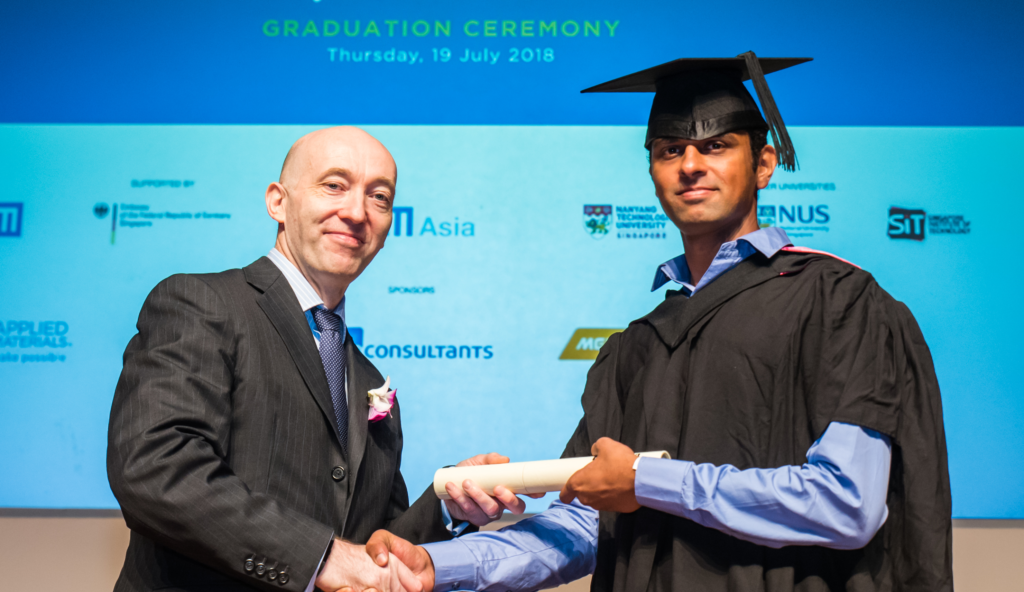
TUM Asia alumnus, Sajal Choudhary, reveals how his role as the Principal Business Analyst at GlobalFoundries helps open the door to smaller and faster chips.
When Sajal Choudhary talks about electronics, his face lights up. “If you see all the semiconductor actions through the lens of supply chains, you can see how a tiny ripple could potentially cause a wave down the value chain. You would be able to see how these chips are powering not one but almost every aspect of the economy across the world – be it IT (Information Technology), computers, household appliances or national security systems,” Sajal elaborated.
At 30, Sajal is already spearheading the business processes and systems as the Principal Supply Chain Analyst of GlobalFoundries, a multinational semiconductor contract manufacturing and design company. With a Master of Science (MSc) in Transport and Logistics* conferred by TUM under his belt, he plays a pivotal role in the semiconductor industry bringing these microchips from one corner of the world to the other. Known as the “brains of modern electronics”, semiconductors or microchips are omnipresent.
They are found in practically every single electronic device in communications, computing, military systems, transportation, and countless of other devices that we own and use today.
According to the European Commission, in 2020, more than one trillion microchips were manufactured around the world, which is equivalent to about 130 chips for every person on Earth. Though the size of a large grain of rice, a microchip requires hundreds of manufacturing steps and up to four months to design and manufacture before arriving at original electronic manufacturers (OEMs) for use.
Navigating today’s highly intricate and globalised nature of semiconductor supply chains is a never-ending juggling act – transgressing many different and varied geographical, political, and legal boundaries. It is in such a high-intensity and fast-paced environment that he finds it exceptionally exhilarating.

“For me, it is very addictive to be in this exciting industry. I meet with a new challenge almost every day that I have never encountered before. Being in the logistics industry provides a glimpse of the global movements. You get to experience the rapid dynamics of the supply chain and appreciate the symbiotic relationship between the supply and demand.
Being in the semiconductor industry and taking charge of its supply chain feels surreal because you get to witness the rapid advances and proliferation of our chips today. They are getting smaller, more sophisticated and we are making them more accessible. The semiconductor industry has the potential to develop to a trillion-dollar industry by 2030. I foresee the impact of my role as a key enabler in connecting the world to bigger and greater technology,” Sajal elaborated.
With little technical knowledge of the semiconductor domain, working in an environment that is inherently deep-tech might seem like a daunting experience. But his second year at TUM Asia where he completed his internship and master’s thesis at Infineon, gladly made up for it.
“Throughout my time at Infineon, I managed to learn more about how supply chain planning in a semiconductor setting works. And you have to possess a thorough knowledge of its operations to plan the movement of its goods and prepare ahead for any disruptions,” Sajal explained.
The knowledge gained during Sajal’s two-year stint at TUM Asia coupled with his years of experience working at semiconductor firms such as Micron Technology and Infineon in Singapore have catapulted his career.
He is now the Principal Supply Chain Analyst responsible for optimising GlobalFoundries’ processes and inventory to make the most out of the resources availed while improving efficiency and reducing cost.
